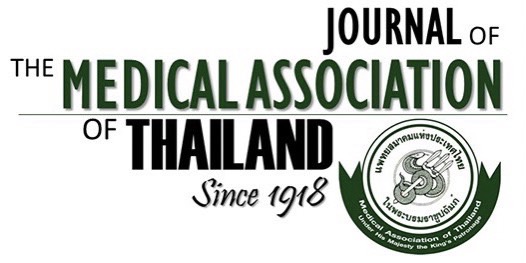Clinical Evaluation of a New Blue Nano-Silver Biocellulose Ribbon Dressing in Cavity Wounds
Surawej Numhom MD*, Prapai Ariyaprayoon RN**, Vichai Srimuninnimit MD*
Affiliation : * Division of Plastic and Maxillofacial Surgery, Department of Surgery, Faculty of Medicine Ramathibodi Hospital, Mahidol University, Bangkok, Thailand ** Department of Surgical Nursing, Faculty of Nursing, Mahidol University, Bangkok, Thailand
Background : For optimal wound-healing process, antimicrobial ability and proper moisture balance appear to play vital
roles in design of wound dressings. Ideal wound dressing should promote moist wound environment that supports the body’s
healing process. Pain-free removal, proper exudates absorption, suitable moisture and infection control serve as the bench-
marks for ideal wound dressing. Biocellulose derived from Acetobacter xylinum has been found to provide decent moisture
control and exudate absorption. By combining with impregnated silver nanoparticles, the resultant dressings obtain antimi-
crobial property. This study describes another innovative ribbon form of blue nano-silver biocellulose ribbon dressing
(BNBR: BluRibbon®, Novatec Healthcare, Thailand) with effective wound healing property for deep or cavity wounds where
extra care is required.
Objective : The present study aimed at evaluating the clinical efficacy of cavity wounds management using BNBR at 4 weeks.
Material and Method: 24 patients, aged over 18 years, who were presented at an outpatient wound clinic and treatment unit
with cavity wounds of various etiologies, were included in this study. Patients were prospectively followed for 4 weeks or until
healing completion for analysis of safety and efficacy endpoints. Wound surfaces were used to assess the initial sizes and
evaluate the progress of healing. Evolution of wound size was conducted with tracing and standardized digital photographs
using Image J image analysis software for determination of the healing rates.
Results : 24 patients (30 wounds) with an average age of 47.6 years old were evaluated. Cavity wounds enrolled has an
average area of 2.4 cm2 and approximately 1.4 cm in wound depth. BNBR enabled minimization of wound area in 90% (27
wounds) of wound samples, whereas 97% (29 wounds: p<0.001) demonstrated significant reduction in wound depth after an
average of 20.7 days of treatment using BNBR dressing. All patients reported their experiences as pain-free both in situ and
on removal.
Conclusion : BNBR significantly promotes cavity wound healing process by reducing both wound area and depth. Suitable
moisture balance and antimicrobial function in BNBR contributed to fast healing process. The present findings appear
encouraging for further randomized controlled trial in larger study groups.
Keywords : Cavity wound, Silver nanoparticles, Biocellulose dressing



